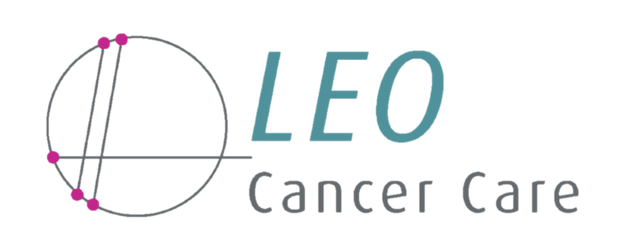Boron Neutron Capture Therapy - Captivating the Radiation Oncology World
The worlds of radiation oncology and pharmacology have long worked side by side to support patients through their cancer treatments. Over the years margins between treatment modalities have blurred and with that emerged radiopharmaceuticals. A concept first coined in the 1920s with the use of a radiotracer for diagnostic purposes. More recently, radiopharmaceuticals have been developed to treat cancer by delivering a radioactive agent to the tumor site that has the ability to destroy cancerous cells. A radiation therapy approach called Boron neutron capture therapy (BNCT) also utilizes radiopharmaceutical approaches and has made significant advances in this area of medicine since its initial proposal in the 1930’s.
In the 1950s-70’s this treatment modality become a reality, however limitations in drug delivery and the requirements of a nuclear reactor to generate neutrons hampered the field. In 2010 the first accelerator-based BNCT unit was developed and this, along with extensive research and boron-drug delivery, has allowed BNCT to re-emerge as a viable treatment option that deserves its place beside other leading cancer treatments, for its ability to target tumors and spare surrounding healthy tissue.
Neutron Therapeutics NuBeam suite
BNCT differs from other radiation therapy options as it requires both a radiation source and a drug that can accurately target cancer cells. The drug is selected due to its high affinity to the cancer cell and its ability to deliver large amounts of boron within the tumor. The patient is then irradiated with epithermal neutrons targeted directly at the treatment area.
When thermal neutrons are captured by a non-radioactive isotope such as boron-10, they cause a nuclear fission reaction which produces a high-energy alpha particle and high-energy lithium nuclei. These alpha particle release energy over the distance of a single cell (about 10 microns), resulting in extremely precise DNA damage in the nucleus of tumor cells and very little to the healthy tissue outside of the tumor. BNCT has the potential therefore for reduced side effects and improved quality of life for patients and it also makes BNCT a very viable treatment option for patients with tumors located close to radiosensitive structures or previous treatment sites.
Current treatment position for neurological tumor treatment using BNCT
With BNCT, effective radiation doses can be delivered to tumor cells in one or two treatments compared to many weeks of conventional photon treatments. Gray equivalent dose may vary based on the area being treated and the neutron source used. Investigators are focused on delivering the most effective dose to the tumor site in order to cause the necessary reaction within the accumulated boron, while also monitoring the dose to ensure minimum impacts to surrounding healthy tissues. This method of delivering high-dose treatment in shorter treatment courses allows patients to have minimal amounts of disruption to their lives and reduced costs from less travel and time away from work.
Whilst treatment can be delivered in a reduced fractionation regime the treatment itself requires patients to be positioned with the tumor site as close to the neutron beam aperture as possible. Historically, this has been done with the patient in a supine position and the total treatment time may take 20 minutes to an hour. As upright radiotherapy has started to make waves in the radiation oncology world, its place within BNCT must be explored. The concept of upright radiotherapy as spearheaded by Leo Cancer Care, Neutron Therapeutics, and Aviko Radiopharmaceuticals aims to provide patients with a more comfortable treatment experience. It also allows improved workflow with patients being able to easily position themselves within the system with minimal practitioner support or intervention. The 6 degrees of freedom on the patient positioning system and 360-degree rotation of the positioning system allow for greater versatility of treatment positioning allowing greater treatment accessibility to certain tumor sites. The intrafraction stability already demonstrated in research carried out at Centre Léon Bérard (Boisbouvier et al, 2022) means patients are held in a supportive and stable position throughout the delivery of treatment which is essential when working with such high energy transfer at a cellular level.
A render of the Neutron Therapeutics NuBeam paired with the Leo Cancer Care Upright Patient Positioning System
Based on the indications where BNCT has been researched to date, upright positioning has the potential to improve treatment delivery, efficacy, and patient comfort. To date, BNCT has focussed on multiple tumor sites including inoperable locally recurrent head and neck cancers, glioblastoma multiforme, salivary gland carcinoma, recurrent meningioma, SCC, hepatic cancers, chest wall, Paget’s disease and recurrent lung cancer. BNCT has been an approved modality in Japan for recurrent head and neck cancer since 2020. In many cases tumor response has been very favorable compared to conventional treatment, some have shown complete regression and the prognosis of more aggressive tumours such as GBM has been improved (Nedunchezhian et al, 2016).
BNCT has a bright future in the radiation oncology world and interest is increasing with the continued development of neutron delivery and drug development. The ability to treat tumors whilst also being able to deliver treatment in shorter fractionations with fewer side effects, thereby improving patient throughput and patient experience, is an important advancement for cancer care.
References
Boisbouvier, S., et al. (2022) Upright patient positioning for pelvic radiotherapy treatments. Technical Innovations and Patient support in radiation oncology. 24. pp 124-130
Nedunchezhian, K., et al. (2016) Boron Neutron Capture Therapy-A Literature Review. Journal of Clinical and Diagnostic Research. 10(12). pp. 1-4Available at: https://www.ncbi.nlm.nih.gov/pmc/articles/PMC5296588/
Please note: The Leo Cancer Care technology shown is pending 510k clearance and will not treat patients until this is achieved.



